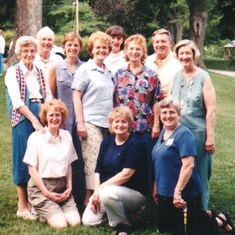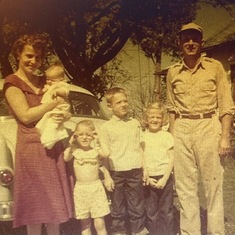On October 24, 2022, Doug Sims passed away at his home in Denver, Colorado. Doug was born on April 29, 1946, and grew up on his family’s farm in Liberty, Illinois; he graduated with a degree in agricultural economics from the University of Illinois in 1968 (Forever Missed, Obituary; Legacy.com). Doug was the CEO of CoBank for the final 12 years of his storied career in the Farm Credit System, a career that spanned nearly 40 years. For his contributions to agriculture, Doug was inducted into the Cooperative Hall of Fame in 2008 (Cooperative Hall of Fame) and the Missouri Institute of Cooperatives Hall of Fame in 2007 (Missouri Institute of Cooperatives). Biographical sketches of Doug generally mention that he played an instrumental role in helping rescue the Farm Credit System in the 1980s. Doug provided leadership and expertise in the development of critical emergency policy responses at a time of economic crisis in American agriculture. His work on policy for the Farm Credit System provides the focus of a tribute, a brief review to honor his memory and contributions.
By way of a very brief background, Congress created the basic infrastructure for the Farm Credit System in 1916 as a cooperative lending alternative for farmers. During President Franklin Roosevelt’s New Deal, Congress strengthened the System, including through the creation of twelve regional Banks for Cooperatives as a source of credit for farmer cooperatives. Congress also created the Farm Credit Administration as an independent agency to provide oversight (Manner, 2014; Andersen Hill, 2010; Fite, 1992; Harl 1990; Sunbury 1990). Arguably the most critical background to this discussion came about in 1969 and 1971. The Federal Farm Credit Board established a Commission on Agriculture in 1969 to recommend changes to the authorizing statute, which were reported in 1970 and enacted by Congress in the Farm Credit Act of 1971 (P.L. 92-181). The 1971 Act amendments expanded the System’s lending authorities and helped drive a more aggressive lending strategy, such as permitting the Federal Land Banks to lend up to 85 percent of the market value of the property.
Unknowable to Congress at the time, events would follow almost immediately that delivered abrupt changes and helped contribute to the crisis that developed at the end of the decade and into the 1980s. Among these were the controversial 1972 deal with the Soviet Union that emptied federal surplus stocks and the depleted anchovy harvest that winter (1972-73) that helped cause a run on soybeans and a panicked response by the Nixon Administration. Secretary of Agriculture Earl Butz infamously encouraged farmers to expand production and farm size, while Congress enacted the Agriculture and Consumer Protection Act of 1973, which provided production incentives through target price and deficiency payment policies. Much of the expansion and consolidation that resulted involved borrowing and farm debt increased. In 1979, the Federal Reserve raised interest rates to combat inflation and many heavily-indebted farmers were devastated; within a decade of the 1973 Farm Bill, the Reagan Administration would recreate a Payment-in-Kind emergency program to encourage farmers to reduce planted acres as the farm economy fell deeper into crisis (see e.g., farmdoc daily, May 30, 2019; July 11, 2019; July 30, 2020).
After Congress enacted the 1981 Farm Bill, Representative Ed Jones (D-TN), who chaired the Subcommittee on Conservation, Credit, and Rural Development of the House Committee on Agriculture, began focusing on the Farm Credit System, and agricultural credit generally, which he highlighted with hearings in 1982. The following year, Representative Jones introduced the “Emergency Agricultural Credit Act of 1983” and a subcommittee of the Senate Judiciary Committee held a hearing on farm and home foreclosures, while a subcommittee of the Senate Small Business Committee held a hearing on critical issues for family farmers. Problems within the System have been traced to Louisville in 1983 and Spokane in 1984 but became more pronounced that year when they spread to the Federal Land Bank and the Bank for Cooperatives in Omaha, Nebraska. In 1984, Representative Jones and his subcommittee held field hearings on agricultural credit problems in Missouri and Kentucky, and it was widely recognized that the Farm Credit System was in real trouble by the fall of 1984. President Reagan, however, vetoed an attempt by Congress to help Farm Credit (Weinraub, March 7, 1985).
Donald Wilkinson, governor of the Farm Credit Administration (FCA) which regulated the System, provided a major catalyst in September 1985 when he reversed his earlier position and acknowledged that the System would need federal help with its $74 billion portfolio of farm loans (McCoy, September 4, 1985; Karr and McCoy, September 6, 1985). Within two weeks, the 37 principal banks of the System agreed to seek a federal bailout (McCoy and Karr, September 19, 1985). Work on legislation coincided with the long, difficult debate for reauthorizing the farm bill. Representative Jones and his subcommittee held a hearing on the “Farm Credit Crisis” in February 1985 that included nearly 30 witnesses, as did a subcommittee of the Senate Small Business Committee (House, Serial No. 99-1; S. Hrg. 99-14). A subcommittee of the Senate Judiciary Committee also held hearings on the “Farm Credit Crisis” in March, April and September of 1985, with a particular focus on the Midwest; the Senate Agriculture Committee held an oversight hearing of the Farm Credit System in Montana in April 1985 (S. Hrg. 99-521; S. Hrg. 99-1057). The Senate Banking Committee also got involved in April and July 1985 (S. Hrg. 99-94 and 99-308).
Doug Sims appeared before the Subcommittee on Economic Stabilization of the House Committee on Banking, Finance and Urban Affairs on November 13, 1985 (House, Serial No. 99-58). The other witnesses were Charles O. Sethness, Assistant Secretary for Domestic Finance, Department of the Treasury, and Frank W. Naylor, Jr., Under Secretary for Small Community and Rural Development, USDA. At the time, Doug was President of the St. Louis Bank for Cooperatives and a member of the Legislative Committee of the Farm Credit Council. He was 39 years old.
Doug had the unenviable task of reporting to Congress the request for “a $6 billion line of credit from the Treasury to help the Farm Credit System and its 1 million farmer borrower-owners deal with the problems we are facing” (House, Serial No. 99-58, at 140). He explained that “the [S]ystem has taken upon itself, to help itself, including writing off nearly $4 billion of loans since 1981” and that it had “moved over $500 million to assist the Federal intermediate credit banks in Spokane and Omaha,” as well as “consolidating management, streamlining the staffs, putting loss sharing agreements in place in individual districts, and providing for the consolidation of capital to deal with the financial difficulties” (at 141). Without federal assistance, however, the System would be unable to provide “reasonably priced credit as we are asked to do under our mandate from Congress” (at 142). He added that a study had found the potential for a “shortfall of agricultural credit in the magnitude of $22 to $29 billion” and that rural banks “would lose over one-third of their capital” (at 142). It was not an easy request with the Reagan Administration putting up resistance, but Doug stressed reality. The “problem we are dealing with is a farm income problem that is now backed up into the basic assets that the lenders are financing,” he explained, and it was “as a result of some 50 to 60 percent decline in land values largely in the row crop areas of the Midwest.” The federal loan would help to “finance the cost of carrying those nonaccrual loans so that we can manage through the transition in agriculture and not have the land price plummet below their true economic cash-flow value as a result of too much land on the market at one time” (at 187-88).
Facing skeptical legislators, Doug emphasized that “we have tried to get out in front of our problem financially . . . [w]e have found an illness . . . what we are trying to do here is deal with this problem on the front end to minimize the cost both to the public as well as to the farmer stockholders of the System, and regain the confidence of both the investor and the farmer.” He added that “we cannot do that without a strong signal from the Government that it has put in place a mechanism not only to stand behind our securities, but to deal with the growing asset problem that we are experiencing in the System” (at 191). He stressed “that those loans from the Government would be repaid out of future earnings of the System after we get through this transition” (at 195). Doug predicted that “over the period of the next 3 or 4 years we will need a maximum of $6 billion . . . to cover the cost of carrying the nonaccrual loans that are building on the balance sheet . . . subsidize the interest that we would pay on the debt that we issued to carry those loans and then would be repaid out of the future earnings of the Farm Credit System” (at 198).
On November 21, 1985, Doug appeared before the House Agriculture Committee’s subcommittee on Conservation, Credit, and Rural Development, chaired by Representative Jones. He was a witness in a series of hearings during the fall of 1985 that compiled a record exceeding 1,200 pages (House, Serial No. 99-13). The other witnesses that day were Marvin Duncan, Senior Deputy Governor of the Farm Credit Administration, USDA Under Secretary Naylor, Treasury Assistant Secretary Sethness, and FCA Governor Wilkinson. He opened his testimony by stating that “[w]e recognize the complexity of this issue as well as the controversial nature” of it (at 1077). On behalf of the System, he expressed support for the legislation being considered and highlighted the key matters the bill addressed: “the strengthening of farmer-borrower rights”; “a mechanism for triggering financial assistance”; the “safeguarding of pooling of capital in the system banks” to achieve “fairness and equity, as it relates to the contributing banks and their farmer borrowers”; and “provisions for allowing mergers or liquidations as appropriate based on majority stockholder votes,” which he called “the very essence of grassroots control and stockholder rights.” He added that the bill also addressed “restructuring of the Farm Credit Administration” because “investors, whether they be bondholders or farmers, we believe must have confidence in the regulator.” Finally, the bill addressed the “statutory continuation of a financial warehouse for nonaccrual loans” and flexible “financial assistance” but that “the profitability of agriculture is the best way to keep the system’s need for assistance at a minimum” (at 1077-78).
Doug explained the need for Congress to help the System work out its problems. Doug also spoke from experience. He told Representative Dan Glickman (D-KS), “I am from a district that has been going through this for nearly 3 years” and that as “we began to see the problem developing, we took to the farmer boards in the St. Louis district” and that the farmer boards “voted to merge and consolidate . . . overwhelmingly, 80 percent, 90 percent, and 90 percent in our three States . . . and that is their decision to do what their organizations as they see best fit, given the environment that they are in” (at 1145-46).
When it enacted the landmark Food Security Act of 1985, Congress took steps to help the Farm Credit System, revising the FCA role to be more of an arm’s-length regulator with enforcement powers and rechartering the Farm Credit System Capital Corporation to provide for assistance. The 1985 Act also abolished the Federal Farm Credit Board. (Harl 1990). It was not enough, however, and Doug was back before the Subcommittee on Conservation, Credit, and Rural Development of the House Agriculture Committee on April 9, 1986, along with Neal Conover, chairman, First National Bank of Creston, IA, John Dean, chairman, Agriculture Committee, Independent Bankers Association of America and Les Horsager, vice president, Prudential Insurance Co. (House, Serial No. 99-25). Doug noted that “the Farm Credit System reported an operating loss of $2.7 billion” in February 1986, and that “[l]ast fall clearly Congress said that the Farm Credit System should utilize its earned surplus in dealing with these operating Losses.” He pointed out that “45 percent of our earned surplus was utilized in those operating losses, our earned surplus decreased from $6.2 billion to $3.4 billion” but that “we continue to operate in a very difficult environment . . . the problem is not the availability of credit, it is the repayment ability of the borrower.” The “emerging problem for us,” he added, “is our interest rate situation in many areas” which was “becoming noncompetitive as a result of carrying heavy levels on nonearning loans and acquired properties.” The System had “made the decision . . . that we need to move forward aggressively to utilize those tools that you gave us and try to manage those problems to the best of our ability” (at 43-44). In 1986, Congress again amended the authorizing statute, but Representative Jones acknowledged it was only a short-term attempt at helping the System with its burgeoning problems until a permanent solution could be worked out. The System reported a $1.9 billion loss in 1986 with more losses expected.
Doug’s efforts went beyond Capitol Hill. At the April 1986 hearing, for example, he reported that he had just “finished [] meeting with over 2,000 farmers over the last 60 days, in meetings we have had, and the three States we served, and availability of operating credit was not an issue in any one of those meetings” and that the “key problem that we are dealing with is past debts, not this spring’s operating capital” (at 50). The explained that “the St. Louis district” had “about 5,000 delinquent loans” of which “[l]ess than 1,000 of those loans are either in foreclosure or bankruptcy” and that the bank was “working with those other 4,000 to find some solution to that problem, either through extensions, deferrals, restructuring, and clearly now what we are beginning to do is to take a look at what we could do in both interest and principal and see if that is the least cost method” (at 62). He was honest that the problems were not going away quickly, but that addressing them needed to be orderly, but that “I think we are looking at that issue as being a 1987 issue rather than a 1986 issue at this point” (at 69).
The hearing record offers only the proverbial tip-of-the-iceberg for the incredible work and effort expended by Doug and those he worked with in Congress and from the Farm Credit System; it was an expenditure of effort that ultimately succeeded. In April 1987, the Comptroller General of the General Accounting Office (GAO) reported to Congress on options for dealing with the Farm Credit System (GAO, T-GGD-87-11; see also, GAO, GGD-87-51 and GGD-86-150BR). From there, further work and negotiations produced the Agricultural Credit Act of 1987, which the House passed by 365 to 17 (50, not voting) on December 18, 1987 (Congressional Record, December 18, 1987). The next day, the Senate passed it 85 to 2 (Congressional Record, December 19, 1987). On January 6, 1988, President Reagan signed the bill into law (P.L. 100-233). In addition to restructuring authority and direct assistance, the 1987 Act created the Farm Credit System Insurance Corporation to help manage agricultural lending risk into the future; it also established a secondary market for farm loans known as Farmer Mac. The agricultural economy recovered relatively quickly in the late Eighties. Coupled with the 1987 Act amendments, the System also recovered and earned compliments for the speedy recovery. It was reporting profits as early as 1988 and eventually repaid the federal assistance (Andersen Hill 2010).
Reviewing it now, Doug’s testimony reads like a master class. He was clear and informative about matters extremely complex and difficult to explain. He was firm and convincing, but respectful and honest. The task was difficult, asking Congress for billions in assistance. He faced skepticism and concerns, which ranged from outright opposition to concerns about the fate of the entire Farm Credit System and the farmers who were both borrowers and owners. He had to navigate resistance from the Reagan Administration while sitting next to the Assistant Secretary of the Treasury. On behalf of his employer, he also had to acknowledge mistakes and decisions that had contributed to the crisis. At the witness table, he accepted responsibility on the System’s behalf and sought assistance coupled with support for a strong, effective regulator. The effort required threading a political needle to push Congress to do more than the Administration, and many Members, wanted to do but without antagonizing them or seeming combative. The challenges should not be discounted by time, nor reduced by summarization in review.
In full disclosure, however, I am not an objective observer. Doug was my wife’s uncle and I had the great privilege of getting to know him and his family over nearly two decades. It was an honor to be welcomed into the fold, and great fun to join family gatherings and events.
Doug’s career was ending just as mine was beginning, and I took no small amount of inspiration from his great success. He grew up on a farm but forged his own path and found his own way to contribute in the realm of American agriculture. I gained much from his advice, his thoughts and recollections. From the beginning of my time in DC until our last conversation, I truly enjoyed talking with Doug about agricultural policy and politics, comparing notes of our experiences and memories. And, as I reflect on them, I recognize how fully Doug embodied the best definitions and qualities of leadership and service. These topics were as frequent in conversation as they were demonstrated by his actions and accomplishments.
The moment in history to which Doug dedicated so much offers intriguing and important lessons on leadership and service. Among many other things, leadership involves taking risks—calculated and often strategic risks, but risks nonetheless. It often entails difficult challenges, working hard and effectively to achieve the best outcomes possible, many of which are not always clear or discernible. Key ingredients of leadership also include accepting responsibility for, and learning from, mistakes and failures. Those who serve and contribute also gain from doing so; leadership is neither completely selfless nor purely altruistic. In this can be found lessons applicable to the realities of a system of self-government, which cannot be decoupled from the self-interests of the governed. It requires ambition be channeled as best as possible towards outcomes that also benefit the greater good and the larger public interest. The governed have an important voice in how they are governed and what becomes written into law.
Ultimately, self-government depends upon those willing to step up when needed and contribute of themselves what they are able. These are matters complex and complicated. Doug’s leadership and contributions served the interests of the System for which he worked. At the same time, those efforts also served the interests of the farmers who borrowed from and owned shares in the banks, the employees and their families, as well as the communities, that relied upon them. There were larger interests that included those of the greater farm economy struggling through crisis and those of the public in avoiding a catastrophic collapse and its repercussions. In the rough-and-tumble of policymaking and politics, Doug’s work on behalf of Farm Credit during an extraordinarily difficult time provides much for reflection and may offer lessons in our own difficult times. It was, however, only a chapter in a long, successful life.
For Doug’s family, my condolences on a profound loss. Doug was an extraordinarily kind and caring person, with a great laugh and a generous personality; he will be missed. It is my intention that this review serve as an appropriate tribute, further recording some of his many contributions and helping to honor the life of an extraordinary person.
References
Andersen Hill, Julie. “Bailouts and Credit Cycles: Fannie, Freddie, and the Farm Credit System,” Wisconsin Law Rev. 1 (2010).
Coppess, J. "A Brief Review of the Consequential Seventies." farmdoc daily (9):99, Department of Agricultural and Consumer Economics, University of Illinois at Urbana-Champaign, May 30, 2019.
Coppess, J. and K. Swanson. "The Other Side of the Seventies." farmdoc daily (9):127, Department of Agricultural and Consumer Economics, University of Illinois at Urbana-Champaign, July 11, 2019.
Coppess, J., C. Zulauf, G. Schnitkey, N. Paulson and K. Swanson. "Production Controls & Set Aside Acreage Discussion, Part IV: Reviewing PIK Policies." farmdoc daily (10):141, Department of Agricultural and Consumer Economics, University of Illinois at Urbana-Champaign, July 30, 2020.
Fite, Gilbert C. “The Farm Debt Crisis of the 1980s: a Review Essay,” The Annals of Iowa 51 (1992), 288-293.
Harl, Neil E. "Policy Considerations Related to Further Intervention in the Farm Credit System." Journal of Agricultural Cooperation 2 (1987): 57.
Harl, Neil E. The Farm Debt Crisis of the 1980s (Iowa State U. Press, Ames, IA 1990)
Karr, Albert R. and C.F. McCoy. “Farm Credit Will Need Massive U.S. Aid in 18 to 24 Months, Chief Regulator Says,” Wall Street Journal, September 6, 1985.
Manner, Richard L. “Historical Introduction to the Farm Credit System: Structure and Authorities, 1971 to Present,” 19 Drake J. Agric. L. 279 (2014).
McCoy, Charles F. “Out of Options: Farm Credit System, Buried in Bad Loans, Seeks Big U.S. Bailout,” Wall Street Journal, September 4, 1985.
McCoy, Charles F. and A.R. Karr. “Farm Credit’s 37 Principal Bank Boards Agree to Seek a Bailout by Government.” Wall Street Journal, September 19, 1985.
Sunbury, Ben. The Fall of the Farm Credit Empire (Iowa State U. Press, Ames, IA 1990). U.S. General Accounting Office,
U.S. House of Representatives, Committee on Agriculture, Subcommittee on Conservation, Credit, and Rural Development, “Farm Credit Crisis,” Serial No. 99-1 (99th Congress, 1st Session; February 7, 1985).
U.S. House of Representatives, Committee on Agriculture, Subcommittee on Conservation, Credit, and Rural Development, “Agricultural Credit Conditions,” Serial No. 99-13 (99th Congress, 1st Session; September 11 and 12, October 30 and 31, November 21, 1985).
U.S. House of Representatives, Committee on Agriculture, Subcommittee on Conservation, Credit, and Rural Development, “Examination of Current Agricultural Credit Conditions; And Review of Legislative Proposals to Assist Agricultural Producers and Rural Lenders,” Serial No. 99-25 (99th Congress, 2d Session; April 9, 1985).
U.S. House of Representatives, Committee on Banking, Finance and Urban Affairs, Subcommittee on Economic Stabilization, “The Problems of Farm Credit,” Serial No. 99-58 (99th Congress, 1st Session; October 23, November 13, 14, 19, and 21, 1985).
U.S. Senate, Committee on Agriculture, Nutrition, and Forestry, “Oversight of the Farm Credit System and Production Credit Associations,” S. Hrg. 99-1057 (99th Congress, 1st Session; April 8, 1985).
U.S. Senate, Committee on Banking, Housing and Urban Affairs, Subcommittee on Financial Institutions and Consumer Affairs, “Agricultural Lenders,” S. Hrg. 99-94 (99th Congress, 1st Session; April 26, 1985).
U.S. Senate, Committee on Banking, Housing, and Urban Affairs, “Farm Credit Relief Act of 1985) S. Hrg. 99-308 (99th Congress, 1st Session; July 24, 1985).
U.S. Senate, Committee on Small Business, Subcommittee on Small Business: Family Farm, “Farm Credit Problems and Their Impact on Agricultural Banks,” S. Hrg. 99-14 (99th Congress, 1st Session; February 7 and 27, 1985)
U.S. Senate, Committee on the Judiciary, Subcommittee on Administrative Practice and Procedure, “Farm Credit Crisis,” S. Hrg. 99-521 (99th Congress, 1st Session; March 25, April 9, Sept 6, 1985).








